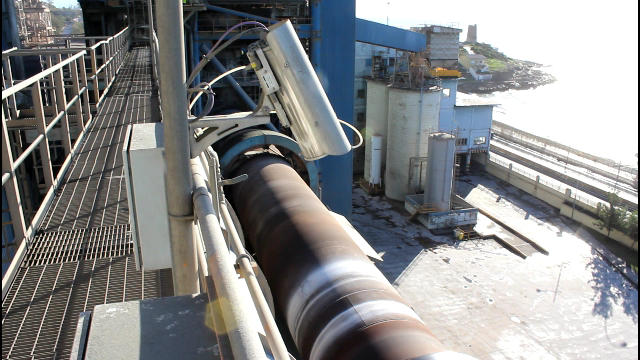Kiln operators and managers rely on accurate temperature data from the kiln to detect hotspots and prevent catastrophic kiln failures. Thermal camera-based kiln monitoring systems are an increasingly popular tool which can help to reduce maintenance costs.
In the last few decades, infrared (IR) kiln shell scanning systems have been used to monitor the temperature of the kiln shell. These systems are mostly based on a rotating 45˚ mirror that reads the length of the kiln at every rotation while directing the energy being “read” to a single IR temperature detector. With the new developments in uncooled microbolometers, their price/performance ratio and the trend towards mass production, the use of thermal camera-based monitoring systems in these applications has become increasingly popular. These new systems can offer innovative solutions to overall requirements of cement plants.
To meet the monitoring needs of cement plants across the world, Spainbased VisionTIR has developed several thermal camera-based applications. Ultimately, this equipment helps cement producers to optimise kiln maintenance and, as it seeks to eliminate unscheduled downtime as much as possible, reduce a cement plant’s maintenance costs.
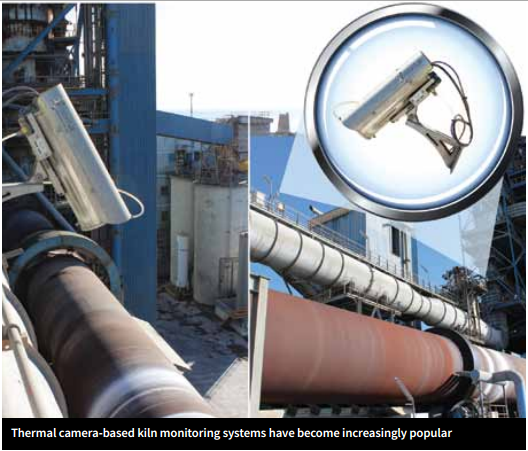
Rotary Kiln Monitoring System (RKS300)
Developed by VisionTIR, the RKS300 system is based on thermographic cameras and provides real-time inspection of the entire kiln length. The system integrates hardware and software as a solution, allowing the detection and measurement of all hotspots on the kiln shell. One of its main benefits is that the realtime inspection is not limited to a line of points but to an area or field of view (FOV), which reaches around 160˚ of the kiln’s perimeter. Therefore, nearly half of the kiln is monitored in real time instead of waiting for a complete rotation.
In addition, the supplied images maintain the kiln’s actual aspect ratio and images are shown in motion. These images are much more intuitive for users, enabling them to recognise different areas of the kiln or even view the actual effect of the fans in real time.
RKS300 software provides access to all the temperature points. These are referenced to its coordinates on the surface of the kiln, optimising and facilitating maintenance schedules and operations. To withstand the aggressive environment that surrounds the system in a cement plant, the RKS300 is protected by a rugged protective housing that resists adverse conditions thanks to an air purge and internal temperature control. This keeps the camera clean and at a constant ambient temperature.
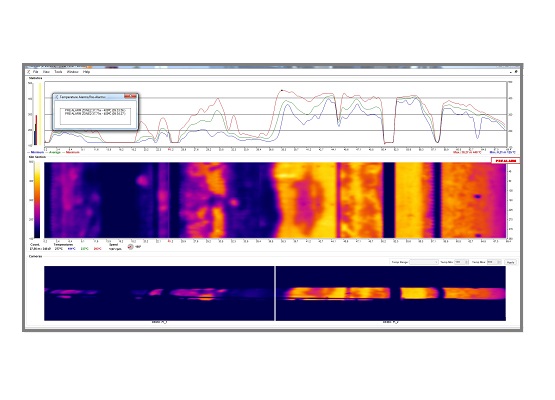
Furthermore, VisionTIR’s RKS300 system includes:
- Fan control system – This prevents kiln shell deformation with active cooling via fans, controlling up to 16 fans with independent actuators. The software detects different alarm levels (that are programmable individually by the operator) and actuates the different fans automatically.
- Tyre slip monitoring – Special hightemperature proximity sensors are installed close to the slip rings. These sensors calculate and monitor the displacement of up to six slip rings for preventing mechanical damage to refractory.
- Shadow monitoring – For those areas where there is no direct vision from the cameras, the system includes high performance IR temperature sensors. These temperature measurements are added to the thermal images to complete the view and the gathering of all the temperature points of the kiln as if there was no shade for the cameras.
- OPC server protocol – Integration and communication of all data processed by the RKS300 to the different levels of the factory (SCADA, databases, communications with PLC and sensors) via OPC connection. It is important to note that RKS300 is entirely manufactured in Europe and its resolution ranges from 478 pixels up to 3200 pixels.
Italcementi case study
The RKS300 system has been installed in different cement plants around the world, either as a stand-alone kiln monitoring system or to supplement existing kiln monitoring equipment, as was the case with an RKS300 system recently supplied to HeidelbergCement’s Italcementi subsidiary for one of its Spanish cement plants. In the past decade, the cement works had been using a scanner system, but the system did not cover the entire length of the kiln.
VisionTIR supplied a kiln monitoring system to monitor a 65m-long kiln. The monitoring system was pre-wired and pretested before installation at the plant, and includes several thermographic cameras, proximity sensors, climate controlled camera enclosures, rack cabinet mounted, DAQ & control boards, and PC with the RKS300 software installed.
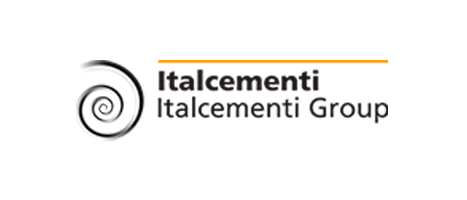
After analysing and studying the customer’s requirements, VisionTIR installed the RKS300 system to monitor the entirety of the kiln’s length in real time, achieving a higher pixel resolution. As a result, the company’s Rotary Kiln System detects a higher number of hotspots and with greater accuracy.
Furthermore, the RKS300 at the Italcementi plant also incorporated a fan control system, a tyre slip monitoring system and several IR thermometers for shadow areas monitoring. Regardless of their technical functions, one of the main advantages that the client found in our system was a very competitive price/performance ratio.
ProTIR System
Thanks to the wide-ranging experience of VisionTIR’s personnel and associates with different plant managers throughout the world, VisionTIR has developed a deeper knowledge of cement plant requirements and is able to offer new innovative solutions in the IR monitoring field.
Some cement plants incorporate into the cooler a boroscope inspection camera in the visible spectrum to inspect the cooler’s interior and identify so-called “snowmen”. Snowmen are formations of large buildups on the cooler’s first (static) grate or the kiln discharge wall where the clinker falls from the kiln. They occur in deposits formed from small clinker nodules and clinker dust particles with a chemical and mineralogical composition identical to clinker, but in some cases with enrichment up to 3.5 per cent K2O and three per cent SO3 has been noticed. Snowmen cause poor clinker distribution, leading to a ineffective heat exchange between clinker and secondary air.
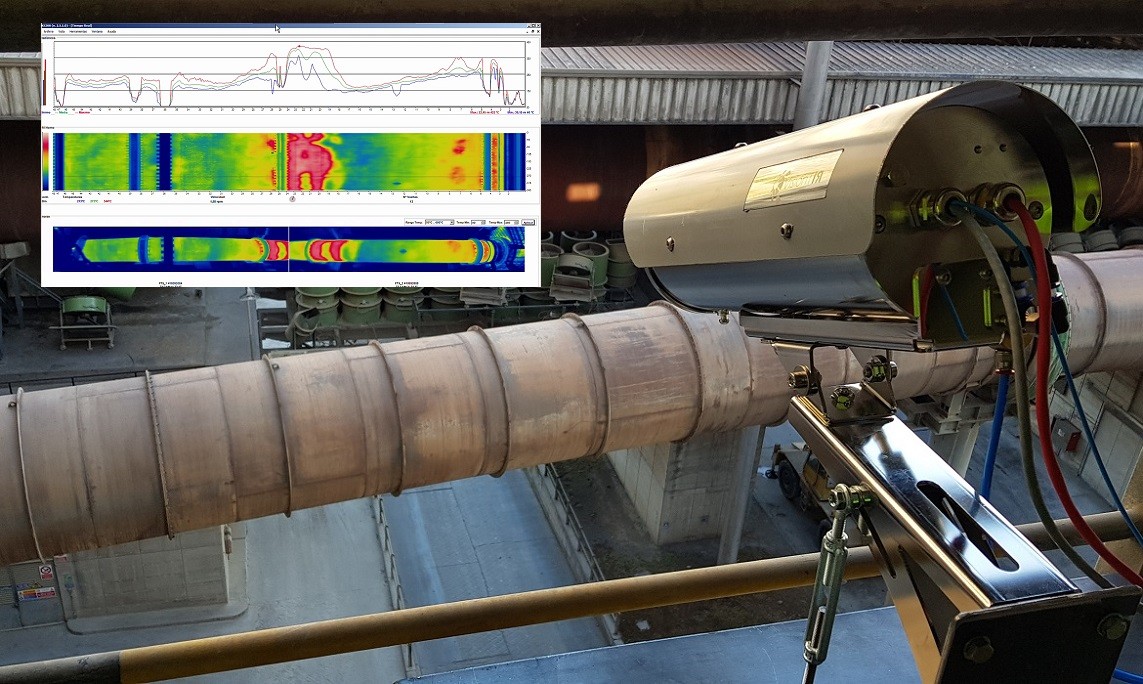
However, due to the amount of smoke and gases inside the cooler, boroscopes are often not able to reliably detect snowman formation. Therefore, VisionTir has developed a new solution: ProTIR.
This system is also based on thermal cameras and is able to withstand the high temperatures (200-1000˚C) generated inside the cooler, providing real thermographic imaging of the cooler. Thus, enabling the imaging system to faithfully reproduce what is happening within the cooler and helping the operator to detect snowman formation. Due to the equipment’s heat resistance of up 2200˚C, installation within the cooler is possible.
Conclusion
Overall, thermal imaging cameras are becoming an alternative and attractive solution for cement plant monitoring requirements. They are able to provide real-time inspection and the images allow the user to recognise and detect different areas of the kiln, hotspots or even real effect of the fans in real time, among others.
Furthermore, thermal camera-based monitoring systems are now cost effective thanks to new developments in uncooled microbolometers and the trend towards mass production. The use of thermal monitoring systems is a potential solution for optimising the cement production process and reducing the cost of maintenance due to damage and unscheduled downtime.


